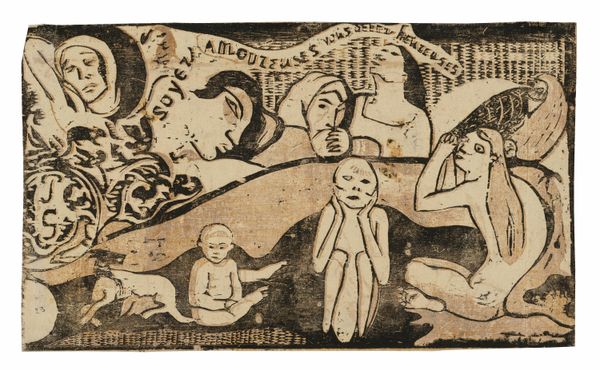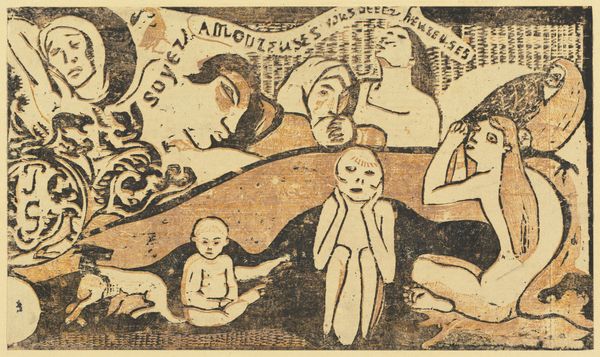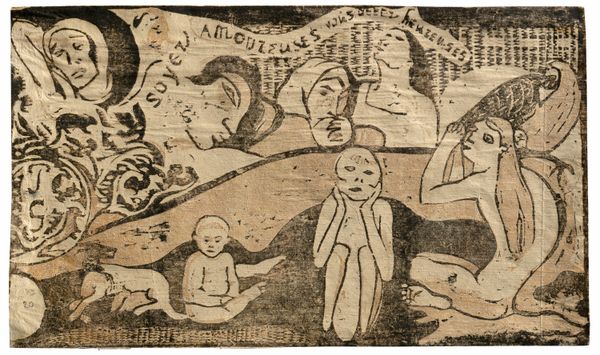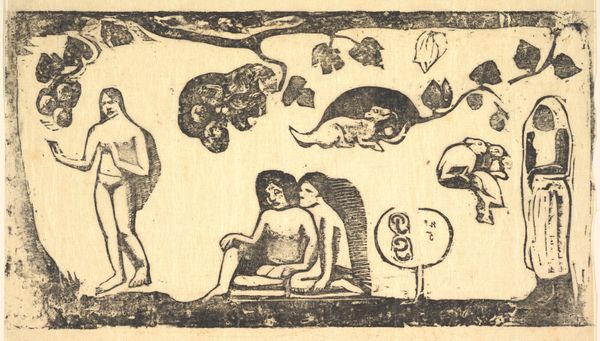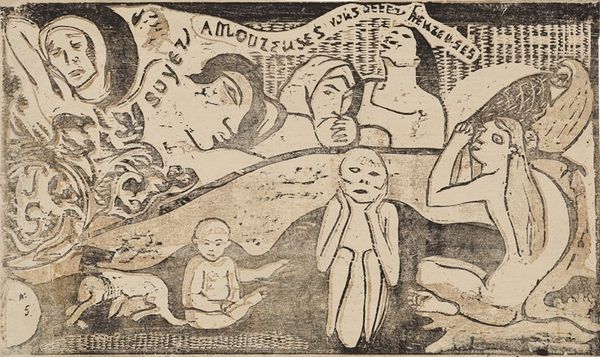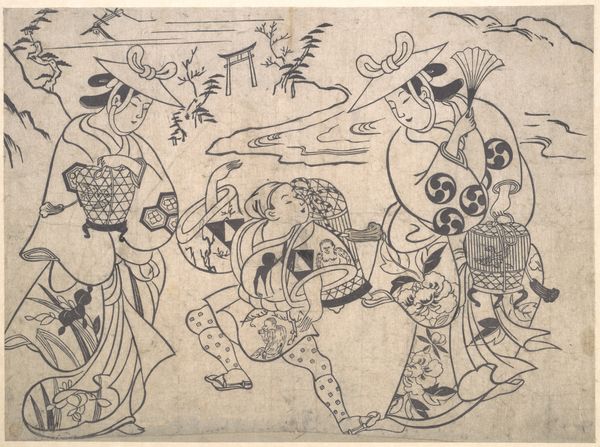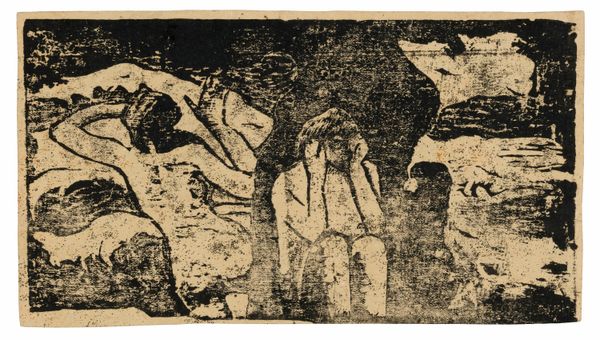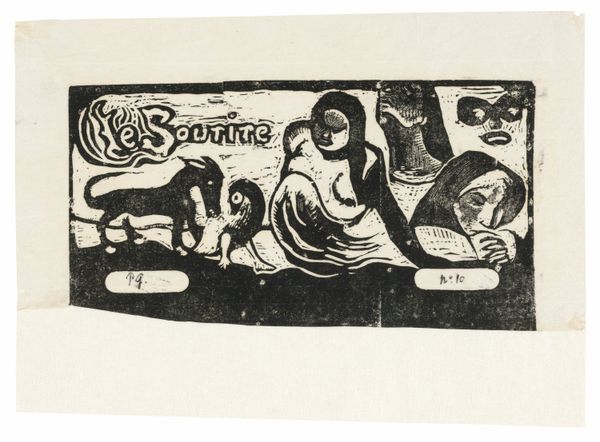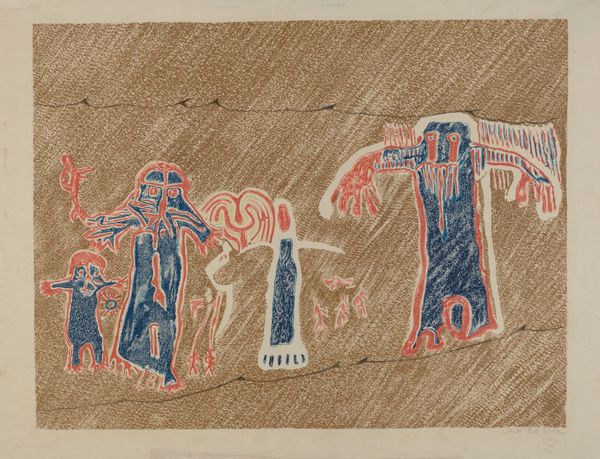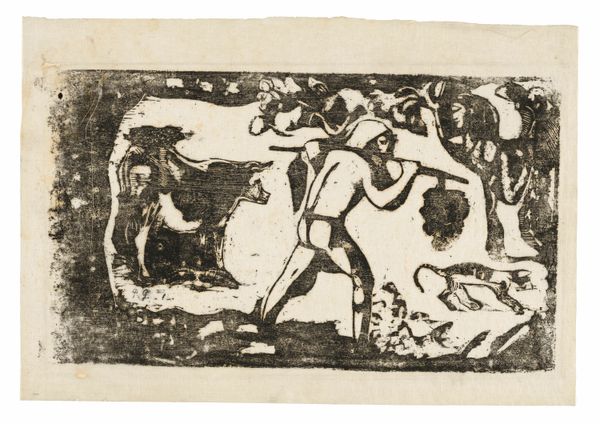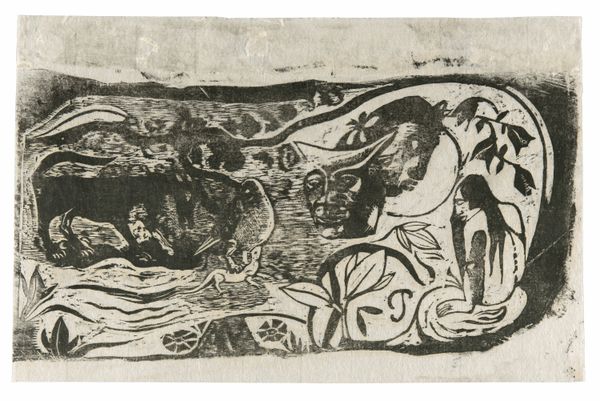
Soyez amoureuses, vous serez heureuses (Love, and You Will Be Happy), from the Suite of Late Wood-Block Prints 1899
0:00
0:00
drawing, print, linocut, paper, woodcut
#
drawing
#
narrative-art
#
linocut
# print
#
linocut
#
figuration
#
paper
#
linocut print
#
woodcut
#
symbolism
#
post-impressionism
Dimensions: 164 × 277 mm (image); 184 × 297 mm (sheet)
Copyright: Public Domain
Curator: This is "Soyez amoureuses, vous serez heureuses," which translates to "Love, and You Will Be Happy." It's a woodcut print made by Paul Gauguin in 1899, currently held at the Art Institute of Chicago. Editor: My immediate impression is of a dreamlike scene. The color is muted, almost sepia, and the figures seem caught between waking and sleeping. It creates a very ambiguous atmosphere. Curator: Gauguin was deeply involved in Symbolism, as we see here. This print, part of a larger suite of woodcuts, explores themes of love, happiness, and the female condition, refracted through his experiences in Tahiti. Editor: The composition strikes me as unusual, almost fragmented. The figures are arranged in seemingly disconnected vignettes, some quite raw in their execution, hinting at underlying emotional tension and the complexities of relationships. Note how Gauguin uses the negative space; it creates a stark contrast and focuses the eye on the expressive quality of the line work. Curator: Indeed. Gauguin actively rejected the naturalism favored by his contemporaries. His use of rough-hewn woodcuts reflects his search for authenticity and a rejection of Western artistic conventions, aligning with his interest in non-European cultures and artistic traditions. Editor: I can't help but wonder if the stark simplicity contributes to a certain primitivism— a characteristic stylistic trait within post-impressionism in an effort to convey a sense of primal emotions. Curator: It also hints at the complicated cultural politics of representation present at the time. Gauguin appropriated Tahitian culture for his own aesthetic and philosophical pursuits, an element we cannot ignore. We can consider, who did the "happiness" actually benefit in these visual pronouncements on love and life? Editor: True, those choices always have implications. What do you make of the interplay of figures seemingly captured in very diverse emotional states? There are dreamy faces, troubled figures, some displaying a real sense of alienation. It's quite thought-provoking. Curator: I see it as Gauguin attempting to explore the multi-faceted nature of love and happiness and not necessarily reflecting a singular ideal but also maybe speaking of the consequences when these conditions go amiss. It is interesting to ponder it from our point of view today as well. Editor: Very well said, and this complexity makes the print resonate beyond a simple sentimental reading. Curator: Exactly, these prints offer rich ground for considering not only Gauguin’s vision but also the social and artistic contexts in which that vision was constructed and received.
Comments
No comments
Be the first to comment and join the conversation on the ultimate creative platform.
